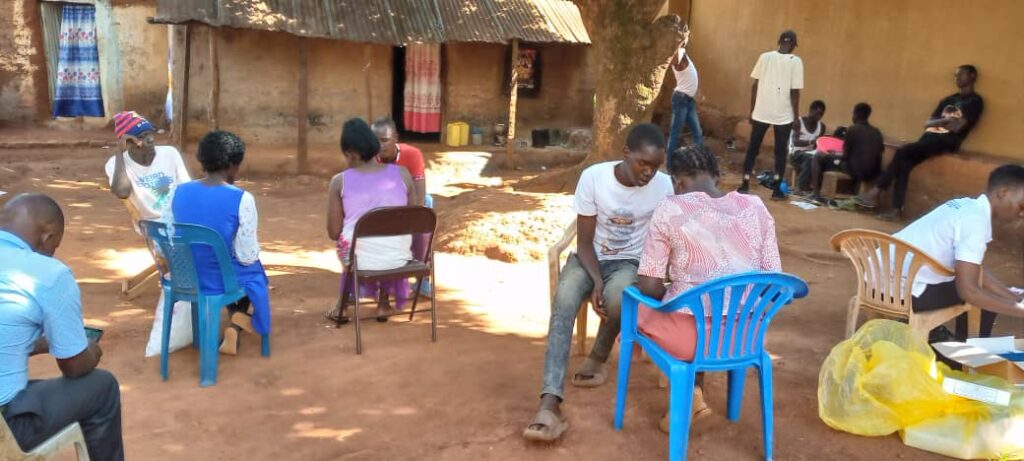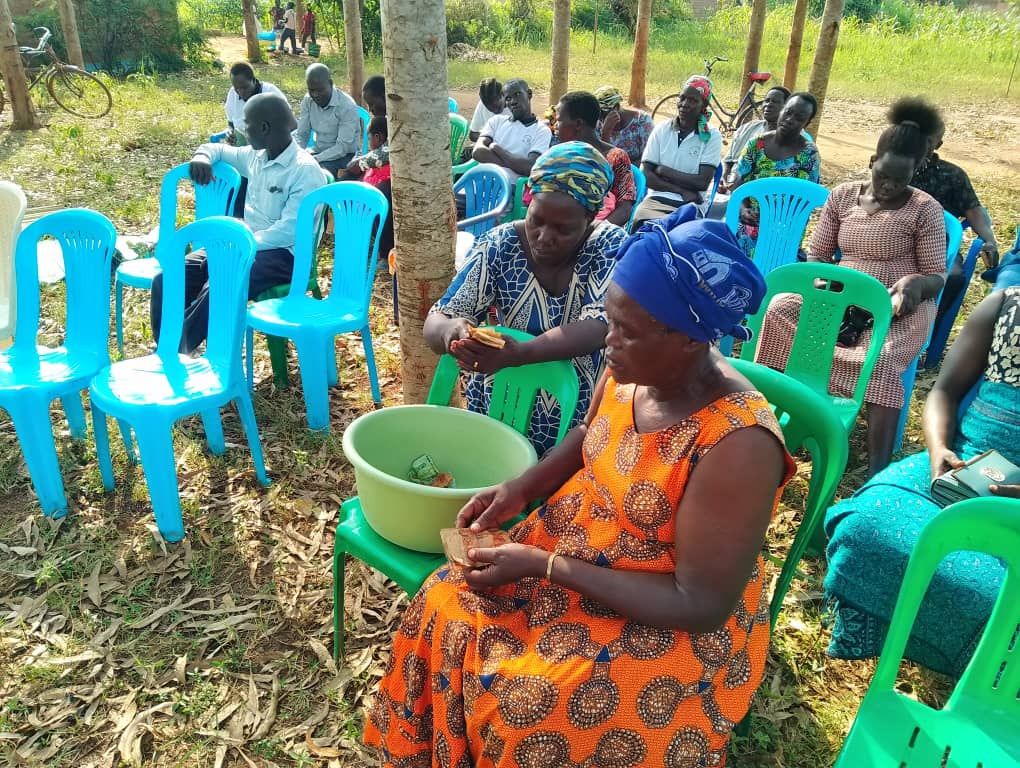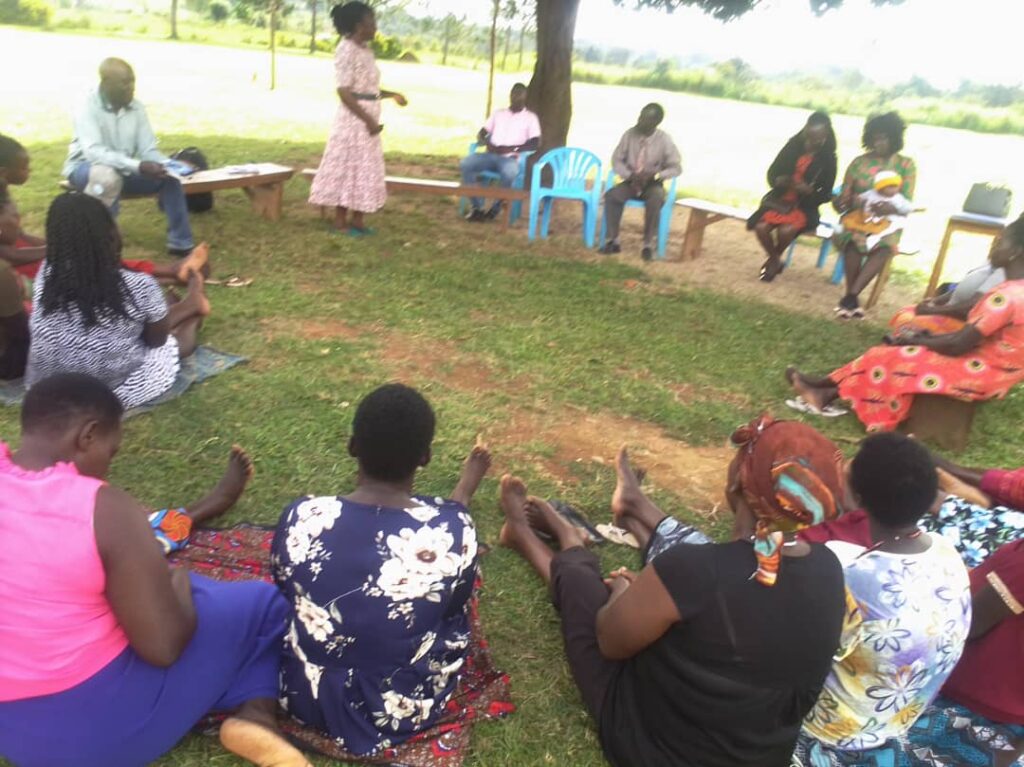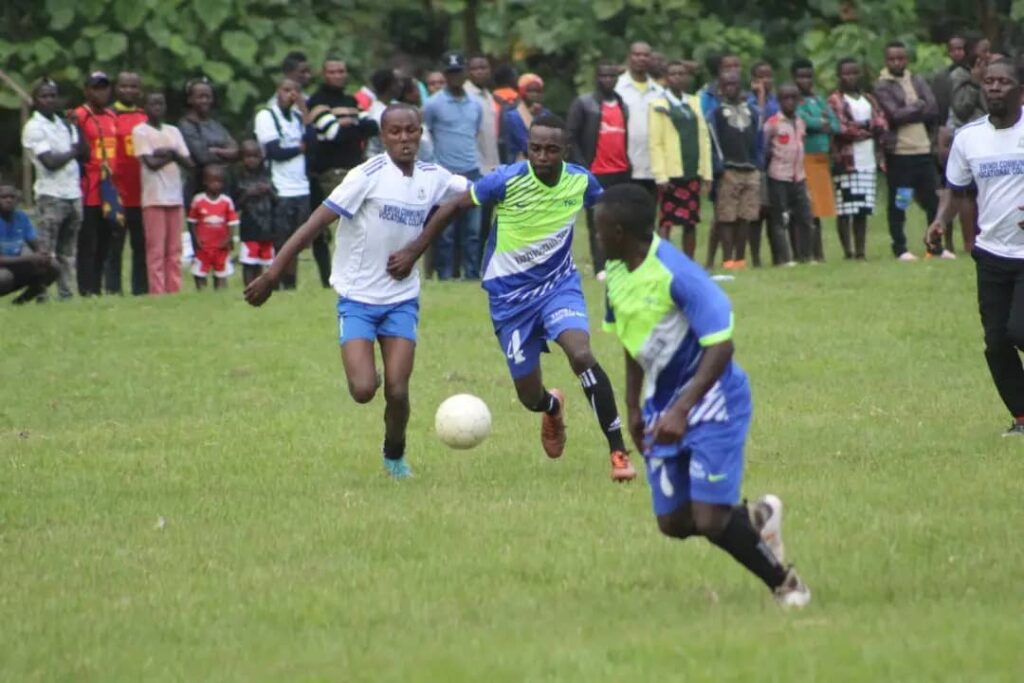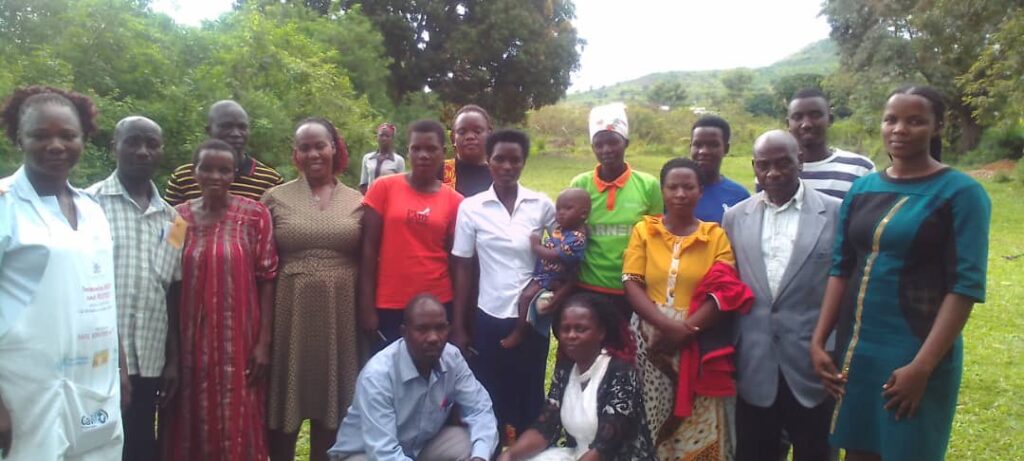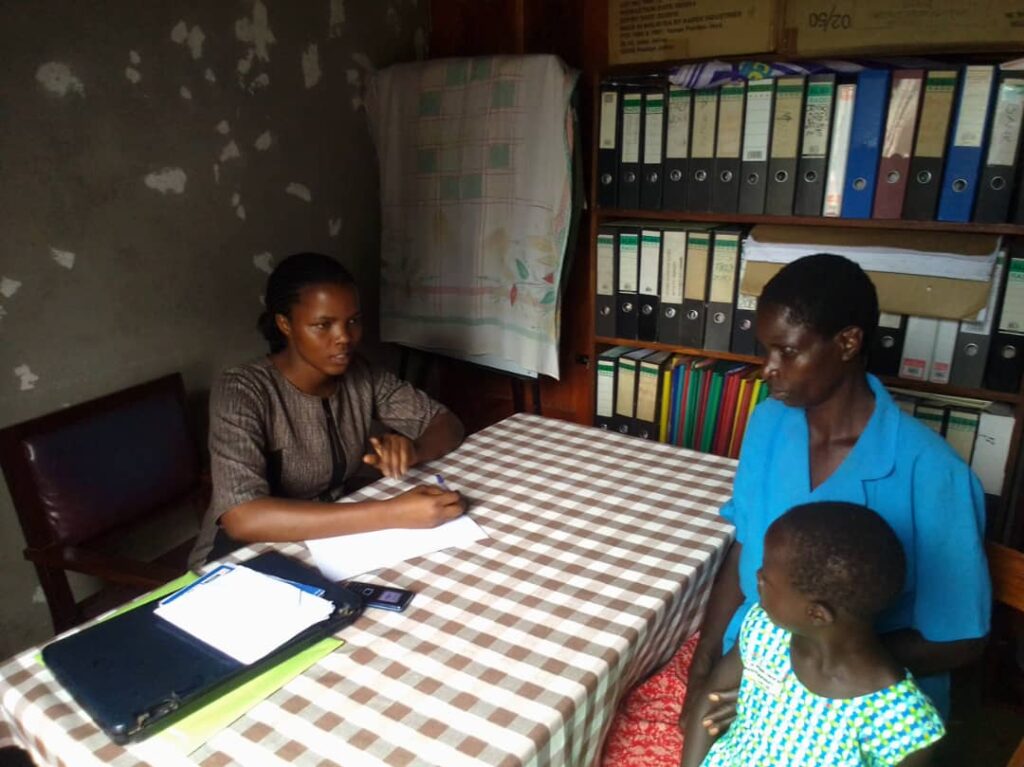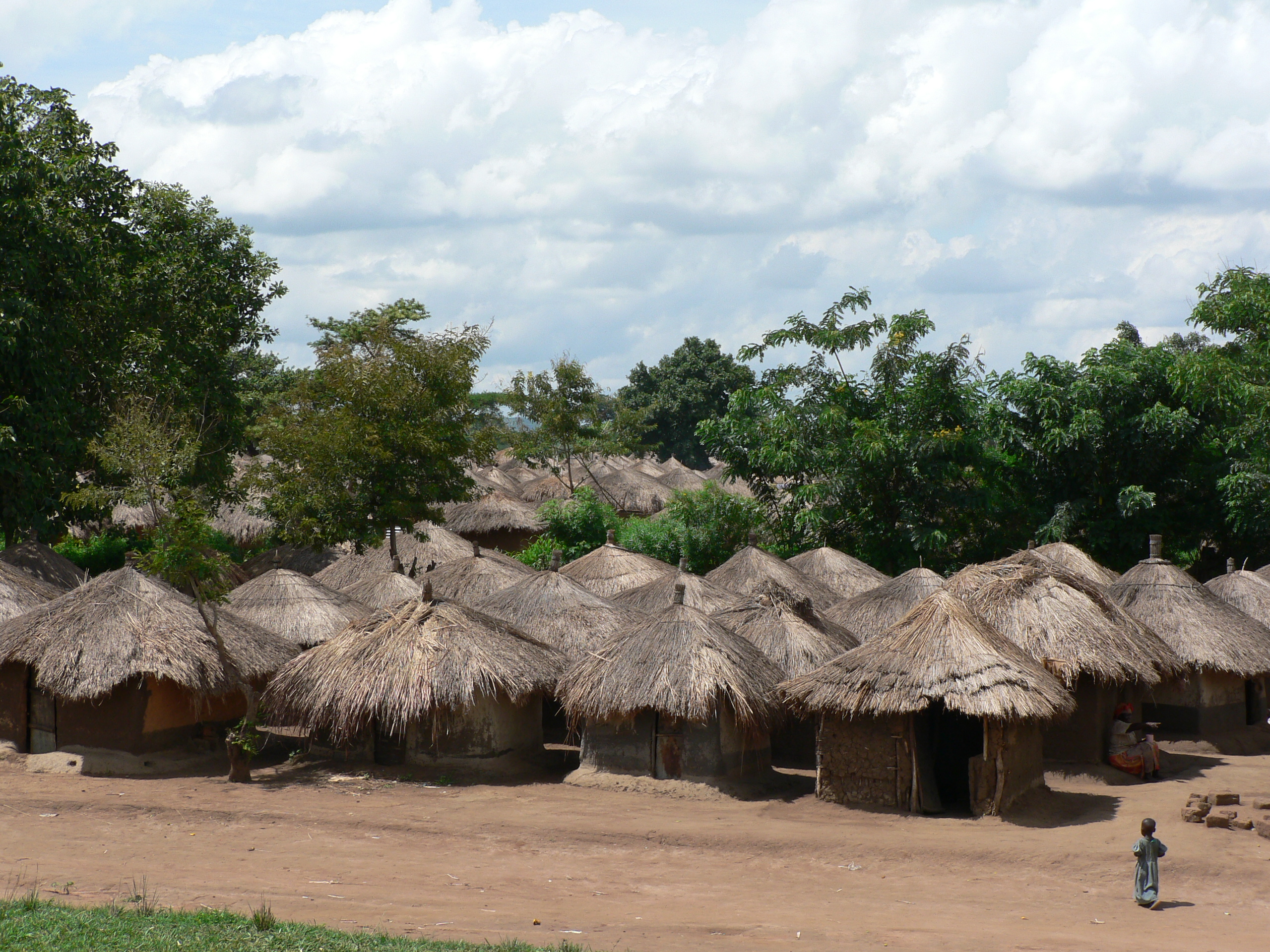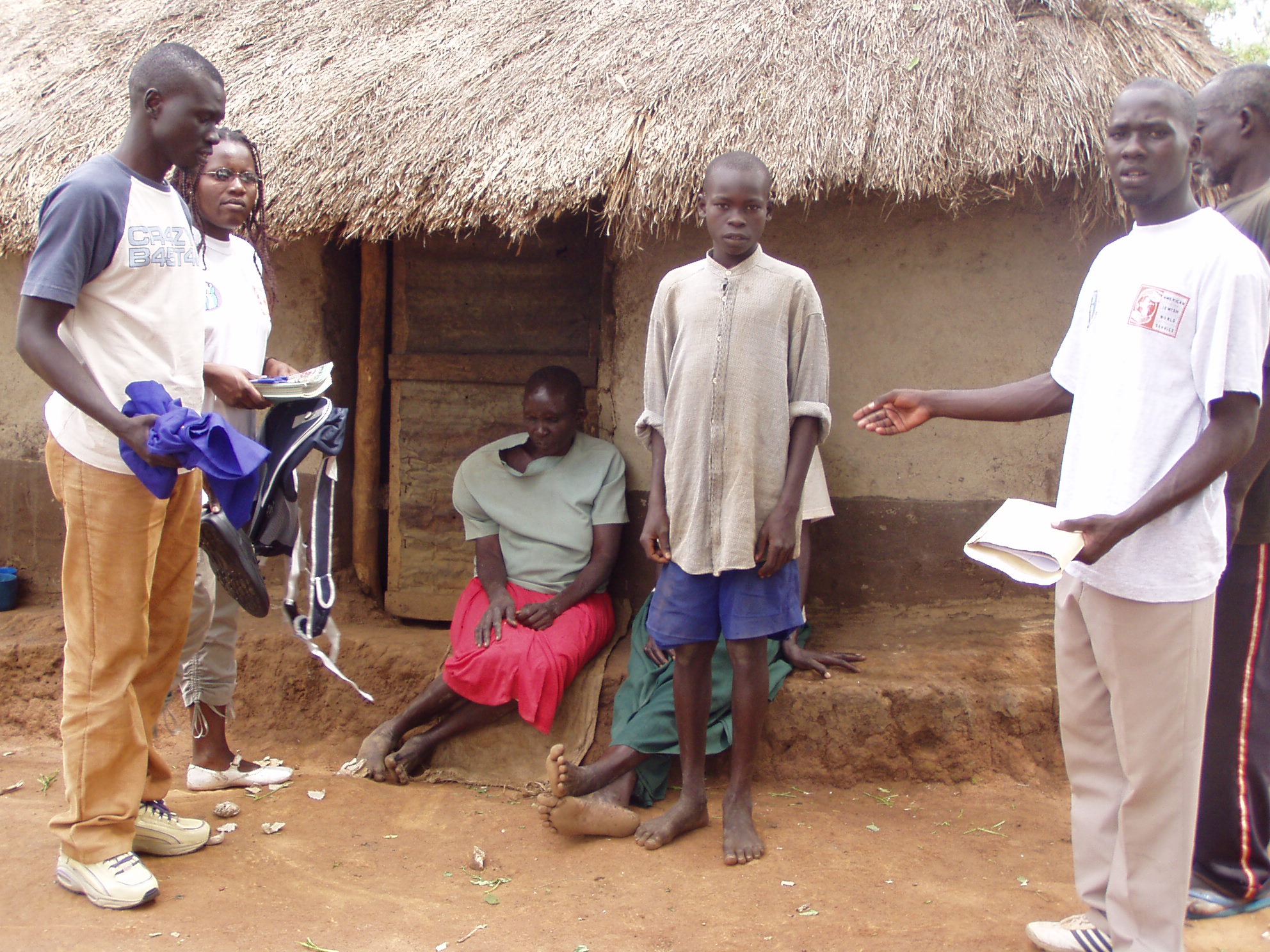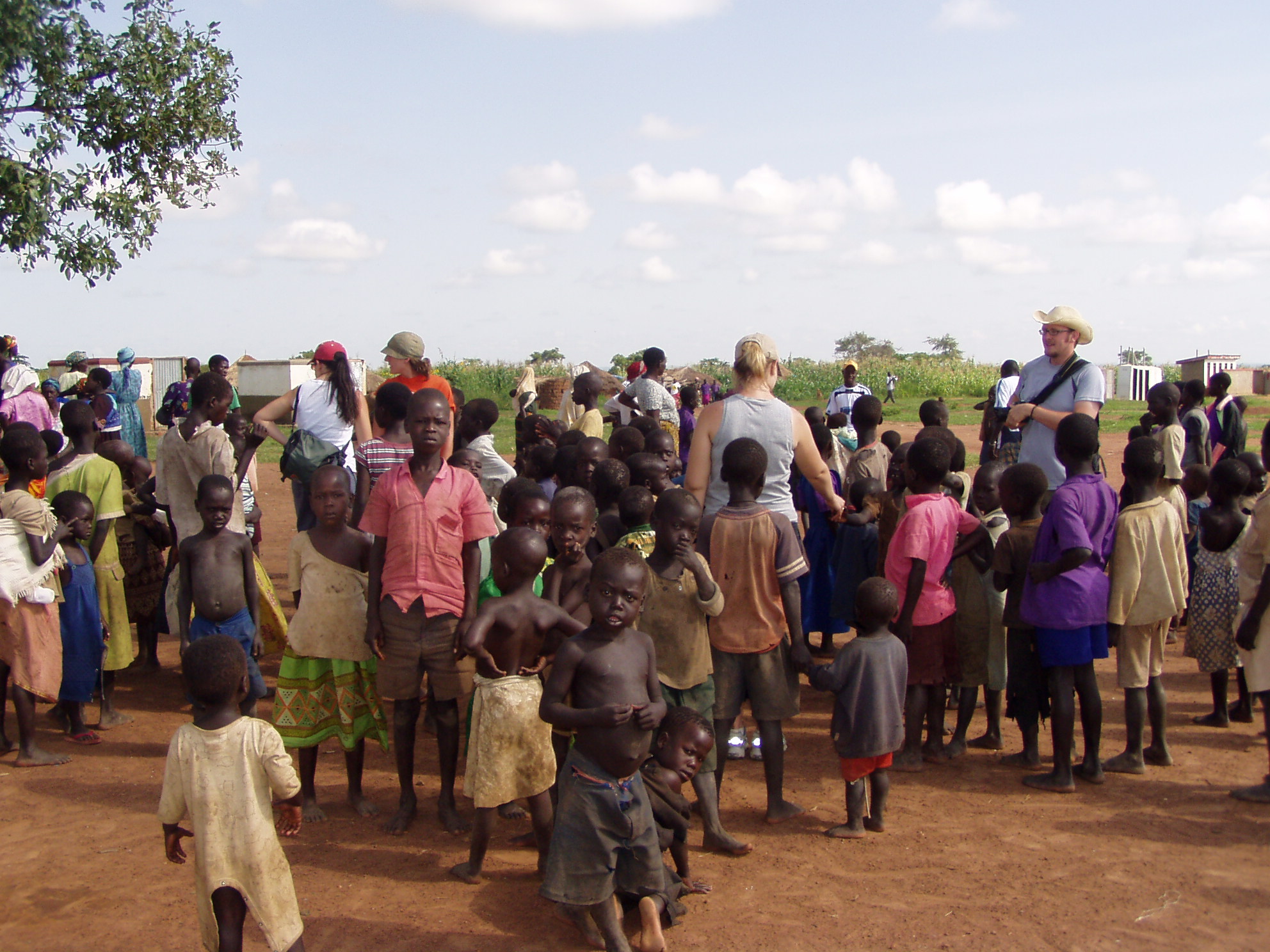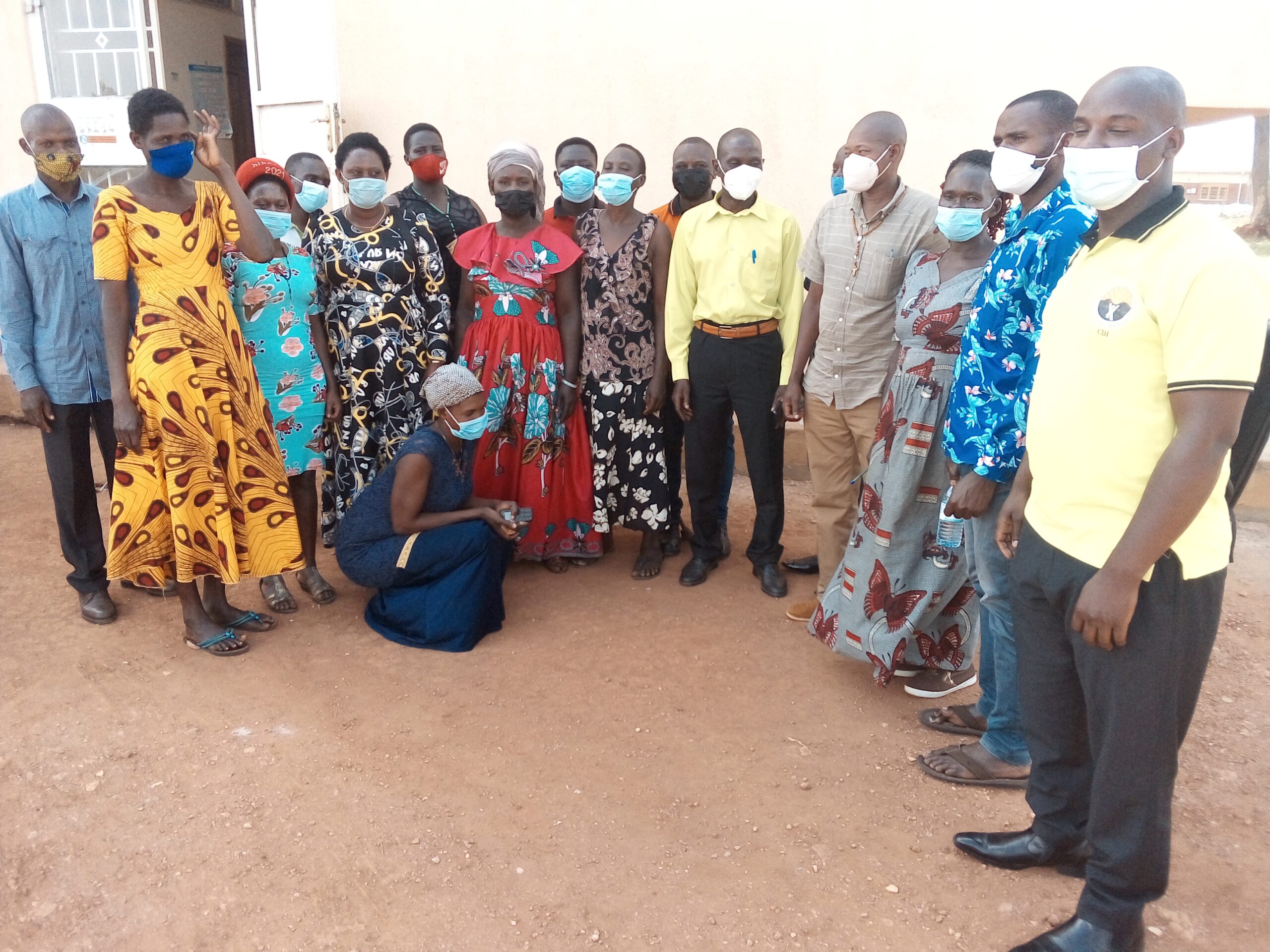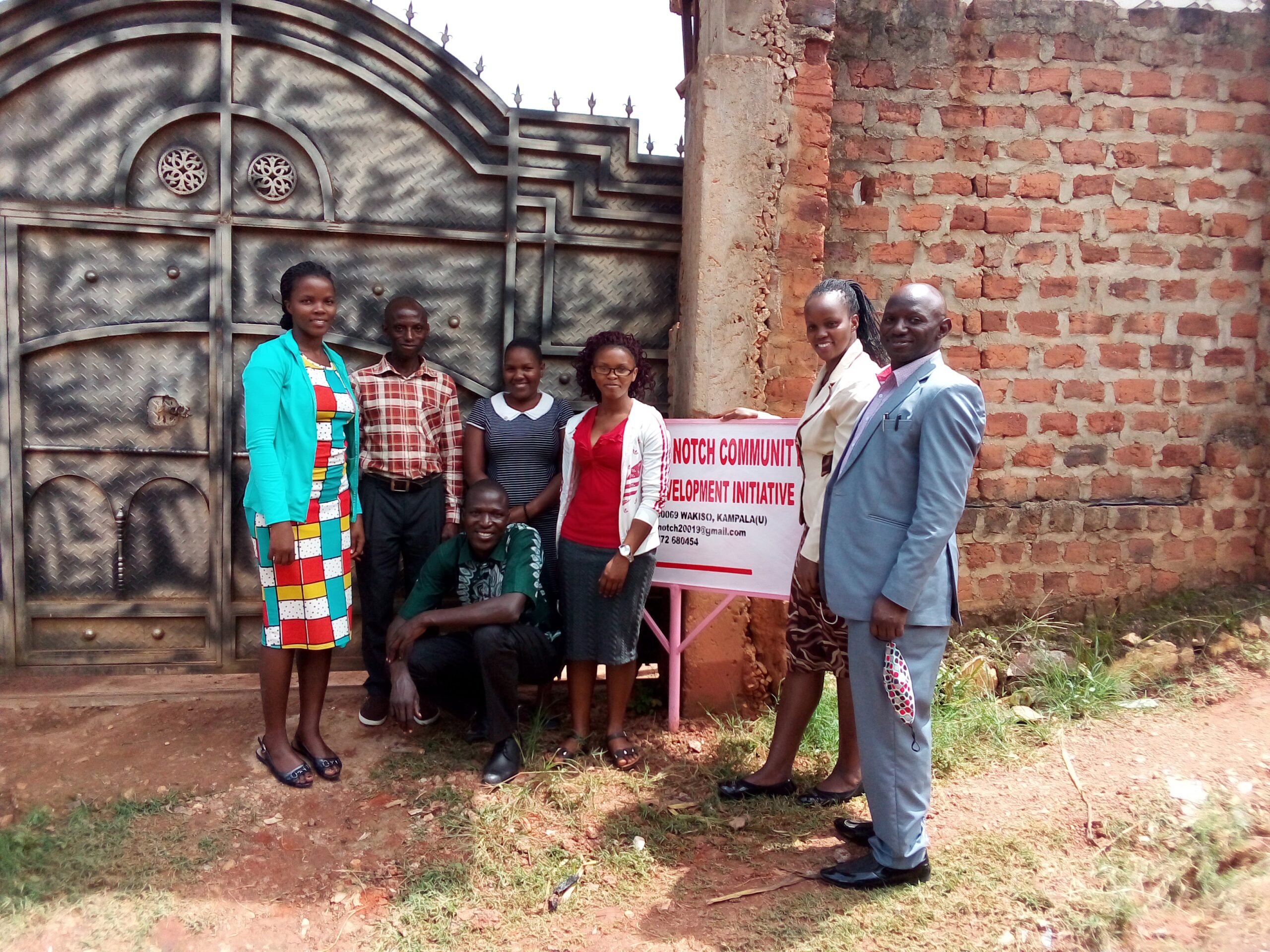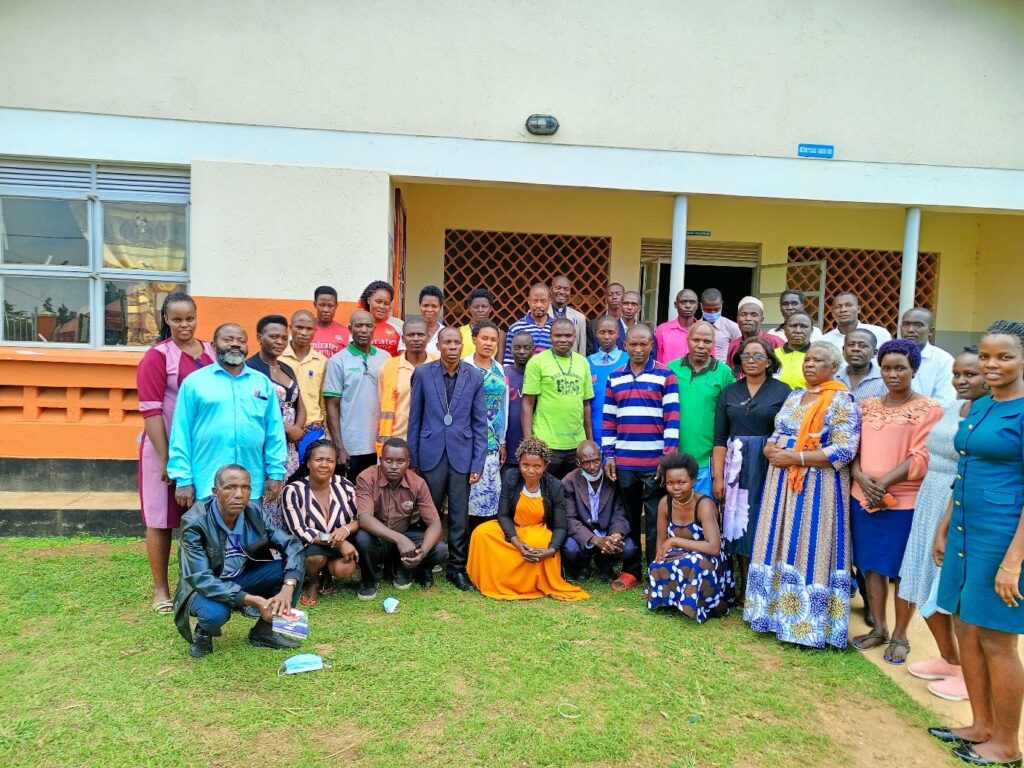
TOP NOTCH SUMMARY REPORT ON AR ACTIVITIES
Participants, Top Notch staff and facilitator pause for a group photo after the training at Kigoyera SC
September 2024
1.0 Back Ground
HIV is a major cause of pediatric morbidity and mortality, especially in Africa. The UN Joint Program on HIV/AIDS (UNAIDS) estimates that 85% of the 2.6 million children with HIV infection are from Sub-Saharan Africa. About 650,000 children are living with HIV and approximately 1,000 infected infants are born every day in Africa. Since few of the 7 million infected African women have access to HIV testing and counseling, not to mention prophylaxis interventions to reduce the risk of HIV transmission to their infants, the high incidence of HIV-infected children in Africa will likely continue for some time. The countries of east and southern Africa and several countries in West Africa have the highest HIV prevalence rates in the world
Kyenjojo among 80 districts with sub-optimal ART coverage. High (3%) and (6.7%) vertical transmission rates at six weeks and final is unacceptable. Delayed initiation or discontinuation of ART during pregnancy or breastfeeding increase vertical transmission of HIV to children. Other barriers escalating late diagnosis of children include limited integration of HIV in maternal and pediatric services, lack of social support to women, fear of disclosure of infant HIV status to partners, stigma and lack of knowledge of timing for pediatric testing, fear for domestic violence and abandonment of women by men, poor transport to health facilities, long distances to health facilities and lack of friendly services at some health facilities.
There is need to improve quality, access and utilization of prevention of HIV transmission to infants, children and adolescents. Strengthening client support, reducing waiting times, and increasing privacy would improve care-seeking behaviors. Treatment, care and support services. Improving healthcare providers’ technical knowledge, attitude and skills would in addition ensure uninterrupted services for infants, children, adolescents and pregnant women. Advocacy at community, district and national levels aimed at influencing policies and functionalizing existing ones that increase accessibility of services for would also impact positively. Top Notch CDI together with CHAU is in a consortium to implement the project reaching the last child in Kyenjojo District.
The duo consorted to leverage on each other’s capacity to implement a project “Reaching the last child” in Kyenjojo district to bridge barriers to pediatric HIV programming and enhance early location of HIV exposed infants and children; and ensure optimal ART coverage in the district.
2.0 Project overall goal
Contribute to Uganda’s national 2020/2021–2024/202 strategic objective of reducing new paediatric HIV infections to less than 5% by 2025.
3.0 Specific objectives
- To identify undiagnosed infants and children exposed to and living with HIV in Kyenjojo District by November 2023; and support them across continuum of HIV care
- Increase demand and update of HIV prevention services among adolescent and young women to reduce new HIV infection during pregnancy and lactation
- To increase enrolment and treatment coverage for women, mothers, infants and their families who are living with or directly impacted by HIV in Kyenjojo District by November 2023
- To strengthen targeted advocacy for addressing barriers to access and utilization of quality HIV prevention, care and treatment services among infants, children, adolescents and women in Kyenjojo District by November 2023
4.0 Activities conducted
4.1 Training on advocacy
In order to strengthen targeted advocacy for addressing barriers to access and utilization of quality HIV prevention, care and treatment services among infants, children, adolescents and women in Kyenjojo District During the month of December 2023, an orientation of community resource persons was conducted. The orientation/training was aimed at strengthening targeted advocacy for addressing barriers to access and utilization of quality HIV prevention, care and treatment services among infants, children, adolescents and women in Kyenjojo District. The training took 3 days (1 day per sub-county targeting 40 participants each). Wednesday 13th Kigoyera Sub County, Thursday 14th Mbale Sub County and Friday 15th Kyarusozi sub county in Kyenjojo district. A total of 120 community resource persons were trained who comprised of 3 health workers,32 Village Health Team members,15 cultural leaders,4 representatives from the sub county headquarters, 9 people with Disabilities (PWDs) reprentaives,10 religious leaders,10 community-based organization representaives,11 Key populations,6 non-government organisations,19 people living with HIV and one police officer.
Key advocacy topics covered were: what makes an issue an advocacy issue, key processes for advocacy, the right targeting of stakeholders, key advocacy platforms at community levels such as community dialogues. Participants were also taken through basic information on PMTCT so that they are able to understand the key areas that need advocacy. At the end of the training participants came up with action plans for increasing access to uptake of PMTCT in their district. Top Notch-CDI was intentional in targeting participants and identified participants who will not only advocate but will also support the process of follow up of clients, conduct outreaches and other social mobilisation activities in the community.
The training achieved the following;
- Participants equipped with Knowledge on eMTCT to be able to address barriers to access and utilization of quality HIV prevention, care and treatment services among infants, children, adolescents and women in Kyenjojo District.
- Trainees gained knowledge on advocacy, identify effective ways of engaging with their leaders to share advocacy gaps at different levels and use their spaces to advocate on reaching the last child initiatives
Other areas trained on
Infants
- Point of care testing in hard–to-reach areas & high-volume inpatient settings
- Scale up community Early Infant Diagnosis testing (EID) through integrated Expanded Program on Immunization (EPI)/EID outreaches
- Maternal retesting in late pregnancy and post-partum periods
- Strengthen HEI screening for exposure at mother baby care points & Immunization clinics
Children
- Strengthen Index testing for biological children of WLHIV
- Use paediatric Community resource persons to strengthen community index testing
- Expand Caregiver assisted HIV self-testing
- Use lay screeners to administer Paediatric screening tool at 579 priority sites
Adolescents
- Strengthen index testing for biological children and adolescents of WLHIV & APN
- Expand adolescent HIV Self testing through the Young Adolescent Peer Support (YAPS) platform
- Expand Social network testing
- Provider Initiated Testing and Counselling (PITC) at high yield entry points
| Figure 1: Facilitator during the training in Mbale Sub County Kyenjojo | Figure 2: Top Notch staff explain objectives of the training |
4.2 Activity: Conduct community advocacy campaigns through radio talk shows to increase demand for HIV testing, care and treatment services among infants, children; and adolescent and young women.
During the project period three talk shows were conducted aimed at increase demand for HIV testing, care and treatment services among infants, children; and adolescent and young women. Awareness was created on pediatric HIV services available in the health centers. The radio talk shows reached at least 23,000 people at different times with key messages contributing to increased uptake of ART services. Messages include;
- Prevention was emphasized with eMTCT information provided to listeners and a call was made for key stakeholders to be part of the elimination process
- Awareness was created on pediatric HIV services available in the health centres and the importance of continuous utilization of these services for sustainability. The interactive session engaged the community, provided vital information, and called upon listeners to support ongoing efforts to reduce new pediatric HIV infections in line with Uganda’s national strategic objectives.
- Listeners informed on where to access ART services from their different locations
- One of the talk shows built on community dialogue on Test and Treat Policy, the gaps, achievements, and best practices related to the UTT policy, emphasizing the critical need for early diagnosis and optimal ART coverage for HIV-exposed infants and children
- The general public got informed about the trained advocates who would be mobilizing women, mothers, youth, and families care takers of infants, who are living with or directly impacted by HIV to access HIV treatment and play a role in ensuring reduction of new infections
Figure 3: Top Notch CDI representative and during one of the talk shows conducted at UNIQUE FM
4.3 Activity: Conduct Consultative Dialogues on Uganda Test and Treat Policy at community and National level
Top Notch CDI conduted consultative meetings in two sub counties of Kyarusozi and Mbale. The consultative dialogue brought on board 60 participants who included service users, service providers and duty bearers at district and sub county level. The dialogue gathered information on Uganda Test and Treat policy and its influence on service uptake to be brough to the stakeholders at the National level.
A national level dialogue was held following the district level consultative meetings in the two Sub Counties of Mbale and Kyarusozi, a total of 29 participants were reached in the National level and incuded key line ministries; Gender, Health and Education. Participants also included community representatives, district leaders and members of the Civil Society.
The meeting gave room for a deep reflection on how the UTT policy is being implemented based on participants lived experiences, this was validated by bringing on board participants from the National level including Kampala and Wakiso who shared similar experiences. The dialogue managed to deliver a comprehensive summary on the UTT policy implementation in Uganda, mainly emphasizing it’s gains and challenges in kyenjojo District. UTT was said to have increased enrolment rates, however the key challenge was retention. The discussions and brainstorming sessions efficiently recognized the primary blockades to effective HIV prevention, care, and treatment services. These included frequent drug stockouts, limited testing points, inadequate counselling services, and a shortage of counsellors.
The objectives of the dialogues were;
- To Share detailed results and insights from the district level consultative meetings on UTT, highlighting both successes and challenges of the Test and Treat policy implementation in Kyenjojo District.
- To Propose and discuss practical solutions to overcome the primary barriers to effective HIV prevention, care, and treatment services, such as frequent drug stockouts, limited testing points, and inadequate counselling services and lack of counsellors
- To encourage the policy makers to consider the possibility of reviewing the UTT to better align with community needs
Level of achievement of objectives’
Encourage policy makers to consider the possibility of reviewing the UTT to better align with community needs
The dialogue enabled alliance between several participants, including representatives from the Ministry of Health, Ministry of Education, Ministry of Gender, Labour and Social Development, health workers, and community representatives. This teamwork was vital for the effective implementation of the suggested resolutions. Discussions did not only stop at UTT policy but proposals were made on other policies which will also contribute to general access to and retention of clients into care.
Participants recommended policy changes to better align the UTT policy with community needs. Suggestions included revising the policy to address enrolling a patient prematurely on medication before proper counseling and preparations, staffing gap and other health system barriers, and incorporating comprehensive support measures for people with disabilities and other vulnerable groups.
While there were no commitments to reviewing the policy, Top Notch is glad that some guidance was provided to health workers on how to support clients who test HIV positive for the first time. i.e introduce Art to be taken for two weeks then gradually increased to enable monitoring of the client. To address issues of distances from facilities outreaches were encouraged and utilization of the Differentiated Service Delivery Models (DSDM) approaches. Given possibility of the project continuity focus will be made on these proposals i.e follow up to see that the health workers implement the guidance gradual introduction of ART while monitoring client, utilization of the DSD models and also continue advocating for possibility of review of policy and other issues that remain unaddressed.
Endorsement was made into integrating HIV treatment and care into the school curriculum with emphasis on treatment of HIV and Care to enable students and health workers to have an in-depth knowledge about HIV treatment and care. The representative of the Ministry of Education explained that discussions were on to integrate HIV into Education curriculum and called upon Top Notch CDI to be part of the processes. Moving forward Top Notch will work closely with the MOEs to ensure that this is achieved. Representative of Ministry of health emphasized the need for the different line Ministries to work together.
In regards to nutritional challenges MOH informed that data is lacking to inform programing. They called upon partners to support in generating evidence to be used to inform nutritional services. The representative from the ministry of gender recommended that even as we wait for data, there were simple ways of enhancing nutrition in the communities. Mothers should be educated and trained how to produce and prepare nutritious food for their children and themselves to avoid malnutrition. Backyard farming/Kitchen farming was agreed as one intervention to allow people living with HIV be able to provide food. Partners were called upon to integrate this in other programs. Top Notch will also include this in development of other projects when seeking for funding but also given the possibility of project’s continuity communities will also be sensitized on nutrition.
In regards to distances from Health facilities MOH informed that the Differentiated service Delivery Models were scaled up and encouraged its utilization. A loop hole was also raised in regards to the DSDM policy where delivery of drugs to the community is still not embraced due to stigma related to being identified. Health service providers were guided to stick to the DSD guidelines and ensure that clients are dealt with case per case to ensure their comfort.
Propose and discuss practical solutions to overcome the primary barriers to effective HIV prevention, care, and treatment services, such as frequent drug stockouts, limited testing points, and inadequate counselling services and lack of counsellors
The following solutions were proposed for possible integration by partners in their programs
- Empowering young men and women with economic empowerment ventures to help them be self-reliant.
- strengthening outreach programs, empowering young men and women economically, and encouraging moonlight counselling and testing.
- Encourage moonlight counseling and testing, men often gather for some social events such as football matches, therefore testing and counseling them at places where they gather to watch football at night was ideal. Also creating social events such as tournaments with a purpose to test and counsel would help reach the men.
- Encourage home based care not only for ART but also HIV testing services including viral load to help reach the disabled and elderly people leaving with HIV.
- Localize the training and education given to the communities to ensure they really understand the sensitization messages. “PowerPoint presentation is very irrelevant to the since many of them are less educated and the models are in English so they are not able to internalize into local language, hence there was need to translate modules into local languages, IEC materials should also be put in the local languages.
Insights Shared from the district level consultative meetings on UTT, highlighting both successes and challenges of the Test and Treat policy implementation in Kyenjojo District.
The HIV focal person presented with evidence the HIV/AIDS Performance Status as of March 2024, where he highlighted the unmet gap in Kyenjojo for partners to put their focus as they do their programming. He pointed out that the unmet gap among the male was high between the ages 20-34 and ages 9 and below. On the other hand the unmet gap among the female was between ages 15-24 and ages 5-9. He called upon Top Notch and CHAU to continue supporting the district in order to close the unmet gap.
Table 1: showing ART Coverage in Kyenjojo
| Figure 4: Left a representative of MOH makes her submission, right the district Educater makes a presentation on unmet gaps in the district calling stakeholders for support |
| Left a representative of MOH makes her submission, right the district Educater makes a presentation on unmet gaps in the district calling stakeholders for support |

